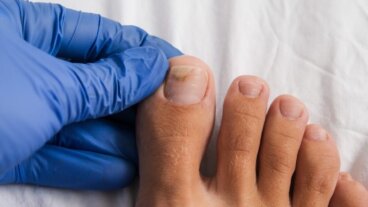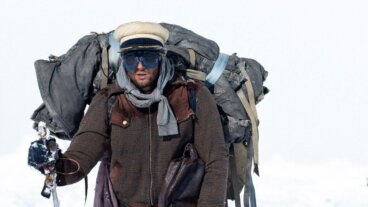Why Babies Shouldn't Sleep in a Car Seat
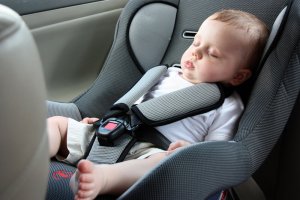

Reviewed and approved by the doctor José Gerardo Rosciano Paganelli
You’ve done everything to get your baby to fall asleep and are sort of desperate. Then, almost out of ideas, you buckle them up in their car seat and you get into your car and start driving.
Then, as soon as you’re down the street the miracle happens: your baby is now asleep. You can’t believe it. However, you’re quite pleased that the task is accomplished without realizing that it’s not advisable for a baby to sleep in a car seat.
Of course, you later return home. Then, after they finally fell asleep, you may not even consider disturbing them by taking them inside the house. You’d rather them stay there until they wake up while you take advantage of a chance to relax. Still, the question pops up in your head: Is it good to leave the baby sleeping in the car seat?
If this scenario is familiar to you, then you’d better read this information.
Why Do Babies Fall Asleep as Soon as a Car Moves?
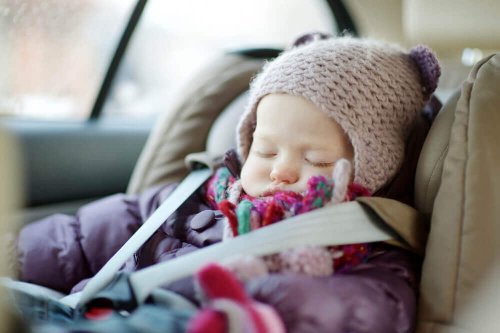
Cribs and the extreme quietness that surround them are nothing like the atmosphere where a baby inhabited during their 9 months of gestation. In the maternal womb, the baby was held tightly throughout the 24 hours of every day.
Babies are used to the beats of the maternal heart and to the sounds of her digestion and her breathing. Also, they listen to her voice a lot and to any other sounds that she might expose herself to.
From the perspective of a fetus, the mother is in constant motion: she moves and walks around, goes up and down staircases and does other exercises, etc. At night, she barely stops when she goes to sleep because, although she may stay still, her sounds don’t entirely go away.
It’s in the middle of that tenuous but continuous whirlwind of sounds and movements when the baby falls asleep. This is why it’s easy to imagine why, once they’re placed inside a huge crib located in a lonely and silent room, they find it hard to fall asleep.
Of course, it all changes when they’re in a car seat. In it, the stimulus of the car vibrations and the engine revolutions achieve what seems impossible to parents: our baby falls asleep almost immediately.
Furthermore, it isn’t hard to imagine the reasons why it happens. The “humming” of the car sends babies back to their days in their mother’s womb.
You may be interested in reading: How To Help Your Baby Sleep Better
What About the Car Seat?
Baby seats and baby carriers are basic safety tools for transporting your baby in and out of a car. In many countries, their use is obligatory by law.
A car seat is a basic, extra safety measure for your child in the event of a collision. So, never place a baby in the front passenger seat next to the driver or on your lap. In particular, it’s always preferable that they’re in their car seat and never in someone’s arms.
Certainly, in the event of a collision with another vehicle or something else along the way, loose things and bodies inside it are often expelled from them after high impacts. We’ll leave it to your imagination to think of what would happen if you had the baby in your arms.
In such situations, a baby car seat makes the difference between their life and death. However, problems arise when a chair that’s larger than appropriate is used for a newborn baby.
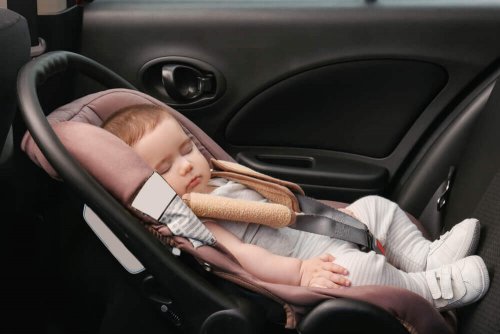
It’s inevitable that a baby will fall asleep in a car at some point or another, and you can’t keep them from falling asleep whenever they need to. Furthermore, what you must do to protect their safety is to monitor them while they sleep and make sure they have the correct body posture for it.
Should I Keep My Baby from Falling Asleep in the Car Seat?
You already know how very fragile babies are. Furthermore, because they can’t control their body yet, they move around while seating in the car.
If there are other people traveling in the car besides you and your baby, then ideally, your companion should travel in the back, next to the baby, and be attentive to the baby’s body postures.
Try to not leave the baby alone in the back seat for a long period of time. If you travel alone with them, then avoid long trips as much as you can.
Risky Situations
Consider the following when a baby falls asleep in the car seat:
- As babies don’t have control over their heads – especially during their first months in the world – the movement of the car may tilt their head forward. Consequently, this could block the baby’s airways and lead to suffocation.
- When you place a baby in a chair, you have to monitor their position and then buckle them up correctly. If the straps set up isn’t correct, then their body might flex too much on its own and compress their chest and abdomen.
- The level of oxygen is low when for a baby resting in a car seat, especially when they’re not yet in control of their body. For this reason, don’t keep the baby sitting there for a long time, as they don’t yet have the strength to sit or stand on their own.
- In winter time, it’s necessary to avoid very thick coats on babies while they’re inside a car seat. The safety straps won’t hold them properly because of the thickness of the clothing, which would be bad if there was a collision.
Read also: How to Resuscitate a Baby
We Arrived Home and the Baby is Still Asleep: What Should I Do?
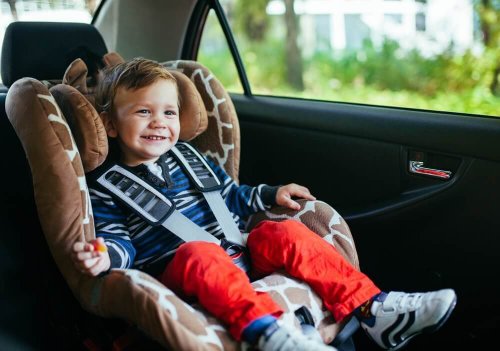
If, when you get home, your baby is asleep, then you should take them out with you. It’s not advisable for them to remain asleep in their car seat. Keep in mind that the design of the car seat is not for sleeping, but for the baby to travel safely in a car and have protection in the event of an accident.
Yes, we know, you don’t to disturb them nor wake them up, so you’re thinking of just carrying the car seat inside and leave them there until they wake up. However, it’s necessary to take them out of the car seat. Remember, babies change their posture and not having the right posture in a car seat could lead to suffocation.
If you wake up the baby, sing them the lullabies and lie down beside him or her. Mom and Dad’s love and warmth will help your baby fall asleep again.
All cited sources were thoroughly reviewed by our team to ensure their quality, reliability, currency, and validity. The bibliography of this article was considered reliable and of academic or scientific accuracy.
- Erich K. Batra, Jonathan D. Midgett, Rachel Y. Moon. Hazards Associated with Sitting and Carrying Devices for Children Two Years and Younger.
https://www.jpeds.com/article/S0022-3476(15)00345-5/fulltext
- Eunice Kennedy Shriver National Institute of Child Health and Human Development. National Infant Sleep Position (NISP) Study.
- On Safety. Safe Sleep: Bedding, Pillows, Safety and More. (2012).
https://onsafety.cpsc.gov/blog/2012/09/18/safe-sleep-bedding-pillows-safety-and-more/
- American Academy of Pediatrics. AAP Expands Guidelines for Infant Sleep Safety and SIDS. (2011).
This text is provided for informational purposes only and does not replace consultation with a professional. If in doubt, consult your specialist.

